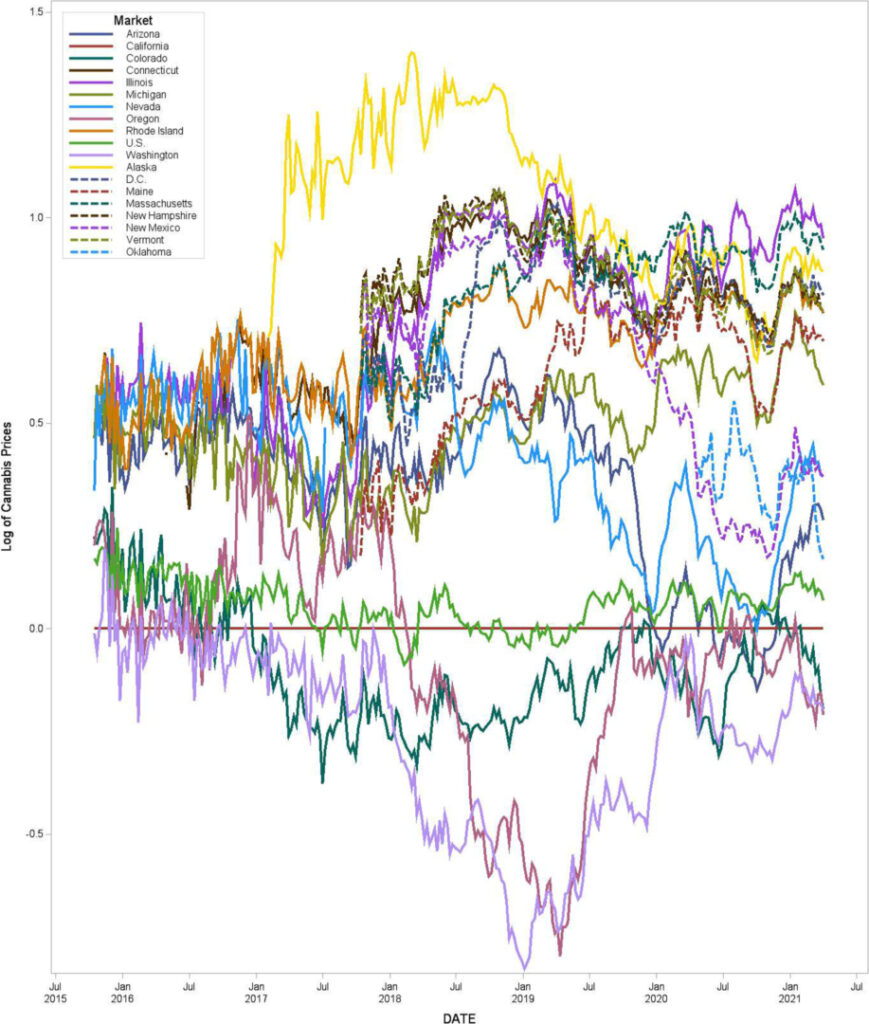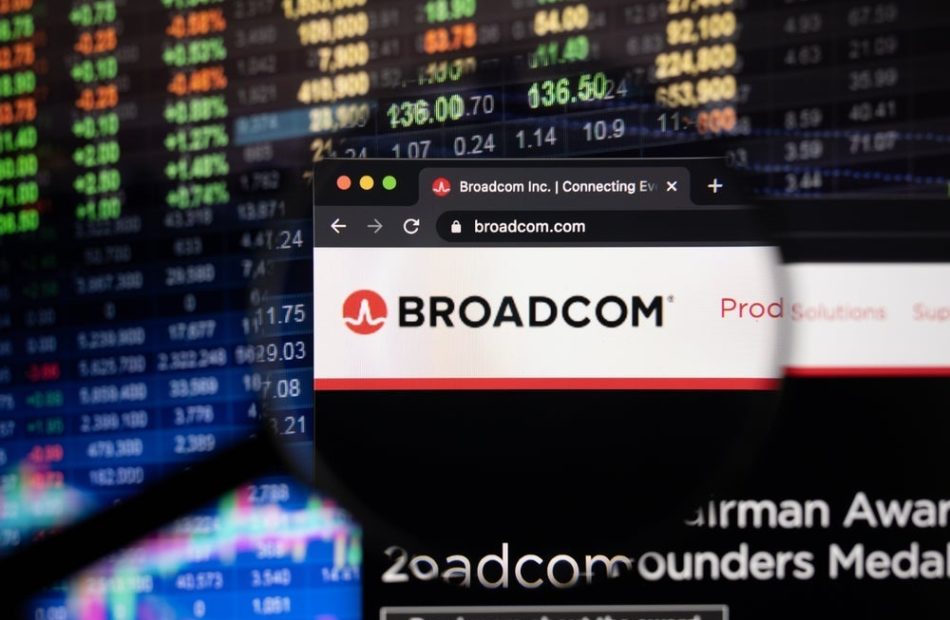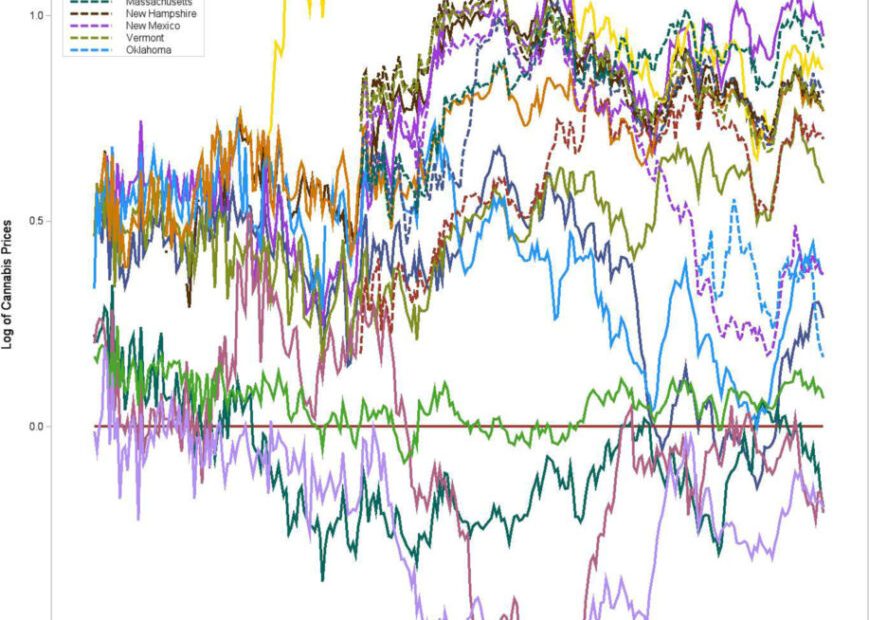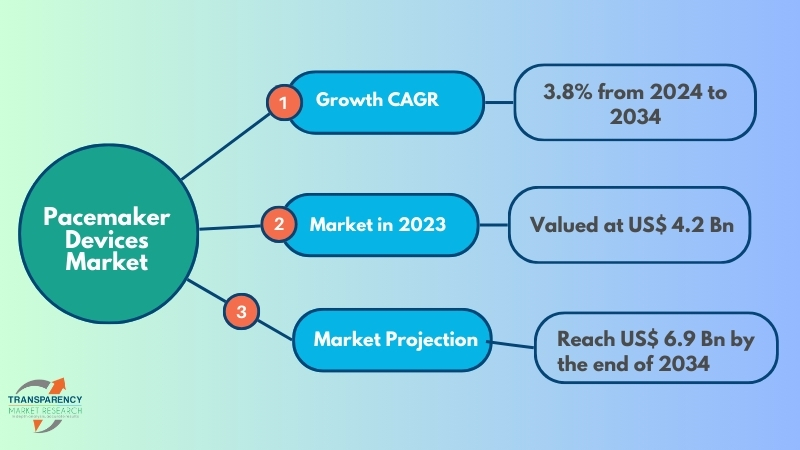Insider Selling: Leslie L Shoemaker Unloads $3.62M Of Tetra Tech Stock
A substantial insider sell was reported on September 12, by Leslie L Shoemaker, EVP at Tetra Tech TTEK, based on the recent SEC filing.
What Happened: A Form 4 filing from the U.S. Securities and Exchange Commission on Thursday showed that Shoemaker sold 78,420 shares of Tetra Tech. The total transaction amounted to $3,616,024.
Tetra Tech‘s shares are actively trading at $46.09, experiencing a up of 0.08% during Friday’s morning session.
Discovering Tetra Tech: A Closer Look
Tetra Tech Inc provides consulting and engineering services for environmental, infrastructure, resource management, energy, and international development markets. It specializes in providing water-related services for public and private clients. It designs infrastructure, facilities, and other structures with complex plans and resource management. Tetra Tech has two reportable segments. Its Government Services Group (GSG) reportable segment primarily includes activities with U.S. government clients (federal, state and local) and activities with development agencies worldwide. Commercial/International Services Group (CIG) reportable segment primarily includes activities with U.S. commercial clients and international clients other than development agencies.
Financial Milestones: Tetra Tech’s Journey
Positive Revenue Trend: Examining Tetra Tech’s financials over 3 months reveals a positive narrative. The company achieved a noteworthy revenue growth rate of 11.2% as of 30 June, 2024, showcasing a substantial increase in top-line earnings. When compared to others in the Industrials sector, the company excelled with a growth rate higher than the average among peers.
Evaluating Earnings Performance:
-
Gross Margin: The company issues a cost efficiency warning with a low gross margin of 16.6%, indicating potential difficulties in maintaining profitability compared to its peers.
-
Earnings per Share (EPS): With an EPS below industry norms, Tetra Tech exhibits below-average bottom-line performance with a current EPS of 0.32.
Debt Management: Tetra Tech’s debt-to-equity ratio is below the industry average at 0.63, reflecting a lower dependency on debt financing and a more conservative financial approach.
Valuation Metrics: A Closer Look
-
Price to Earnings (P/E) Ratio: With a lower-than-average P/E ratio of 42.64, the stock indicates an attractive valuation, potentially presenting a buying opportunity.
-
Price to Sales (P/S) Ratio: The P/S ratio of 2.44 is lower than the industry average, implying a discounted valuation for Tetra Tech’s stock in relation to sales performance.
-
EV/EBITDA Analysis (Enterprise Value to its Earnings Before Interest, Taxes, Depreciation & Amortization): With an EV/EBITDA ratio of 24.15, the company’s market valuation exceeds industry averages.
Market Capitalization: With restricted market capitalization, the company is positioned below industry averages. This reflects a smaller scale relative to peers.
Now trade stocks online commission free with Charles Schwab, a trusted and complete investment firm.
The Impact of Insider Transactions on Investments
Insider transactions serve as a piece of the puzzle in investment decisions, rather than the entire picture.
Within the legal framework, an “insider” is defined as any officer, director, or beneficial owner holding more than ten percent of a company’s equity securities as per Section 12 of the Securities Exchange Act of 1934. This includes executives in the c-suite and major hedge funds. These insiders are mandated to disclose their transactions through a Form 4 filing, to be submitted within two business days of the transaction.
The initiation of a new purchase by a company insider serves as a strong indication that they expect the stock to rise.
However, insider sells may not always signal a bearish view and can be influenced by various factors.
Transaction Codes Worth Your Attention
Examining transactions, investors often concentrate on those unfolding in the open market, meticulously detailed in Table I of the Form 4 filing. A P in Box 3 denotes a purchase, while S signifies a sale. Transaction code C indicates the conversion of an option, and transaction code A denotes a grant, award, or other acquisition of securities from the company.
Check Out The Full List Of Tetra Tech’s Insider Trades.
This article was generated by Benzinga’s automated content engine and reviewed by an editor.
Market News and Data brought to you by Benzinga APIs
© 2024 Benzinga.com. Benzinga does not provide investment advice. All rights reserved.
What's Going On With RH Stock After Earnings?
RH RH shares are trading higher Friday after the company posted better-than-expected second-quarter financial results following Thursday’s closing bell.
The Details:
RH, the home furnishing company, also known as Restoration Hardware, beat analyst expectations for the second quarter on the top and bottom lines and expects third-quarter revenue growth from 7% to 9%.
Read Next: What’s Going On With AST SpaceMobile Stock?
RH’s CEO Gary Friedman attributed the growth to the company’s investment in new product lines and platform expansion which increased its market share in the U.S. and laid a foundation for future growth overseas.
“We are pleased to report that demand was up 7% in the second quarter and has continued to inflect positive, gaining momentum each month with July finishing up 10%. Demand accelerated into the third quarter with August up 12% and product margins inflecting positive despite operating in the most challenging housing market in three decades,” said Friedman.
What Else: Multiple analysts raised price targets on RH stock following the print.
- TD Cowen maintained its Buy rating and raised the price target from $325 to $350.
- Wells Fargo maintained an Overweight rating on RH and raised the price target from $325 to $350.
- Wedbush maintained RH with a Neutral, but raised the price target from $250 to $310.
- Baird maintained a Neutral rating and raised the price target from $275 to $290.
- Morgan Stanley maintained an Equal-Weight rating and raised the price target from $300 to $310.
How To Buy RH Stock:
By now you’re likely curious about how to participate in the market for RH – be it to purchase shares, or even attempt to bet against the company.
Buying shares is typically done through a brokerage account. You can find a list of possible trading platforms here. Many will allow you to buy ‘fractional shares,’ which allows you to own portions of stock without buying an entire share. For example, some stock, like Berkshire Hathaway, can cost thousands of dollars to own just one share. However, if you only want to invest a fraction of that, brokerages will allow you to do so.
In the the case of RH, which is trading at $316.99 as of publishing time, $100 would buy you 0.32 shares of stock.
If you’re looking to bet against a company, the process is more complex. You’ll need access to an options trading platform, or a broker who will allow you to ‘go short’ a share of stock by lending you the shares to sell. The process of shorting a stock can be found at this resource. Otherwise, if your broker allows you to trade options, you can either buy a put option, or sell a call option at a strike price above where shares are currently trading – either way it allows you to profit off of the share price decline.
RH Price Action: According to Benzinga Pro, RH shares are up 24.6% at $319.70 at the time of publication Friday.
Read Also:
Image: Courtesy of RH
Market News and Data brought to you by Benzinga APIs
© 2024 Benzinga.com. Benzinga does not provide investment advice. All rights reserved.
This Beaten-Down Ultra-High-Yield Dividend Stock Is Finally Putting Its Biggest Problem in the Past. Is it Time to Buy?
Medical Properties Trust (NYSE: MPW) has battled a barrage of issues over the past couple of years. The biggest problem has been the financial issues of its top tenant, Steward Health Care.
The bankrupt hospital owner has struggled to pay rent, which is one of the factors that forced the real estate investment trust (REIT) to cut its dividend twice in the last two years. Even with those deep cuts, the REIT still offers a dividend yield above 6% due to the nearly 80% crash in its share price from its peak a few years ago.
The healthcare REIT recently reached a major milestone in its efforts to replace Steward with financially stronger tenants. As a result, the REIT will have a lot more visibility into its future cash flow and ability to pay dividends.
The great replacement
Medical Properties Trust has reached a global settlement agreement with Steward Health Care, its secured lenders, and the unsecured creditors committee. The deal restores the REIT’s control over its real estate, severs its relationship with Steward, and facilitates the immediate transition of operations to replacement tenants at 15 hospitals. The agreement covers 23 hospitals overall, and the REIT is working to find alternative solutions for the remaining ones.
The REIT has reached new agreements with four tenants that will immediately lease and operate 15 hospitals in Arizona, Florida, Louisiana, Ohio, and Texas. The agreements value the real estate at $2 billion. They’ll provide Medical Properties Trust with $160 million of annualized cash rental payments upon stabilization at the end of 2026, which is about 95% of the rent Steward would have owed on these properties at the time.
The new leases have an average initial term of 18 years. Assuming these tenants remain financially healthy, the leases will supply the REIT with very stable rental income for nearly two decades.
Medical Properties Trust agreed to forgo rent on these properties for the remainder of this year to expedite the retenanting process and give the new operators time to ramp up. Further, when rental payments start next year, they’ll begin low and gradually escalate. The new tenants will only pay about 50% of the contractual rental rate by the end of next year, which will continue escalating until the end of 2026 when they’ll reach 100% of the contract rate.
Lots left on the to-do list
Finding new tenants for 15 hospitals formerly leased to Steward is a significant step forward for Medical Properties Trust. Those agreements provide it with visibility into its future rental income streams from those facilities.
However, the REIT still has several items to address before it’s back on a more sustainable long-term foundation. It’s still working out solutions for two hospital construction projects it had been funding for Steward. In addition, Steward had closed four facilities before it filed for bankruptcy, while another two had recently closed due to the uncertainty of that process.
Those closed facilities had a lease base of $300 million. The REIT is also in discussions on solutions for these properties, which could include retenanting the facilities or selling the real estate.
In addition to finalizing its exit from Steward, the REIT needs to take additional steps to shore up its financial foundation. It has been selling off non-Steward properties in recent years to build liquidity so that it can repay debt as it matures.
While it has made excellent progress on that strategy this year (it raised over $2.5 billion, exceeding its $2 billion target), it has more work to do. For example, it still needs to monetize its investment in the managed-care business of Prospect Medical Holdings, another financially challenged tenant. That sale would enable the REIT to recover more of its investment in properties leased to that tenant.
Once it shores up its financial foundation, the REIT can return its focus on growing shareholder value. That would include making accretive new investments and increasing its dividend.
A major step forward
Medical Properties Trust has finally put its relationship with Steward in the past. That’s giving it a lot more clarity on its future cash flow. While the REIT does have more work to do, it has finished most of the heavy lifting. Because of that, it’s starting to get enticing for income-seeking investors.
Its current dividend level is much more sustainable and could grow substantially by 2026 as the REIT collects full rent on its former Steward facilities. While more risk-averse investors might want to wait a while before buying for even more clarity, those with a higher risk tolerance could earn strong total returns from here if things continue trending in the right direction.
Should you invest $1,000 in Medical Properties Trust right now?
Before you buy stock in Medical Properties Trust, consider this:
The Motley Fool Stock Advisor analyst team just identified what they believe are the 10 best stocks for investors to buy now… and Medical Properties Trust wasn’t one of them. The 10 stocks that made the cut could produce monster returns in the coming years.
Consider when Nvidia made this list on April 15, 2005… if you invested $1,000 at the time of our recommendation, you’d have $716,375!*
Stock Advisor provides investors with an easy-to-follow blueprint for success, including guidance on building a portfolio, regular updates from analysts, and two new stock picks each month. The Stock Advisor service has more than quadrupled the return of S&P 500 since 2002*.
*Stock Advisor returns as of September 9, 2024
Matt DiLallo has positions in Medical Properties Trust. The Motley Fool has no position in any of the stocks mentioned. The Motley Fool has a disclosure policy.
This Beaten-Down Ultra-High-Yield Dividend Stock Is Finally Putting Its Biggest Problem in the Past. Is it Time to Buy? was originally published by The Motley Fool
Flappy Bird Is 'Officially Coming Back' After A Decade With October Web Launch
Flappy Bird, the mobile game that stormed the world in 2013, will return after its removal from app stores a decade ago.
The Flappy Bird Foundation Group, a team of dedicated fans, has acquired the Flappy Bird trademark from Gametech Holdings. This company obtained it from the game’s original creator, Dong Nguyen.
See Also: Mobile Games Captured $90.4B, 49% Of Global Market In 2023
“It’s not a rumour. I’m officially coming back, and I’ll be FREE to play,” the game’s official account posted on X.
What’s New In Flappy Bird?
Flappy Bird will launch a web version by the end of October and plans to release on iOS and Android in 2025. The new versions will introduce new characters and game modes.
Michael Roberts, chief creative at the Flappy Bird Foundation Group, expressed excitement about the project: “We are beyond excited to be bringing back Flappy Bird and delivering a fresh experience that will keep players engaged for years to come.”
The Flappy Bird Foundation Group has also secured the rights to Piou Piou vs. Cactus, a game that influenced the original Flappy Bird.
Background
Flappy Bird was released in 2013 and quickly became a viral hit. However, in February 2014, the game which was earning $50,000 a day, vanished unexpectedly from app stores.
At the time, Nguyen told Forbes: “Flappy Bird was designed to play in a few minutes when you are relaxed… But it happened to become an addictive product. To solve that problem, it’s best to take down Flappy Bird. It’s gone forever.”
Read Next:
Photo: Miljan Zivkovic/Shutterstock.com
Market News and Data brought to you by Benzinga APIs
© 2024 Benzinga.com. Benzinga does not provide investment advice. All rights reserved.
CaringKind Presents the 8th Annual Caring to Remember benefit: Raising Awareness and Funds for Alzheimer's and Related Dementias
New York City Real Estate Leaders Come Together to Honor Influential Figures in the Fight Against Alzheimer’s
NEW YORK, Sept. 13, 2024 /PRNewswire/ — CaringKind, New York City’s leading expert in Alzheimer’s and related dementia caregiving, is proud to announce the 8th Annual Caring to Remember Cocktail benefit, which will take place on Wednesday, September 18, 2024, at Tribeca 360. This prestigious event will bring together more than 500 influential leaders from New York City’s real estate and construction industries for an evening of networking, celebration, and raising crucial funds and awareness to support those impacted by Alzheimer’s disease and related dementias.
Founded in 2015 by Heidi Lohrfink Nigg, Geraldine Szabo of GKS Industries, and Andrea Tallent Spivak, VP of Development & Strategic Alliances at CaringKind, Caring to Remember was created to unite New York’s commercial real estate leaders in the fight against Alzheimer’s and related dementias. Since its inception, the event has raised over $1.5 million to support groundbreaking research, caregiving services, and advocacy efforts.
This year’s event aims to raise $550,000, which will support CaringKind’s vital work, including its partnership with the Blue Zones Project in the Bronx. The project focuses on improving community health and reducing the risk of Alzheimer’s and related dementias in the Bronx, a borough with one of the highest rates of the disease in the country.
Honoring Leaders Making a Difference
At this year’s event, CaringKind is honored to recognize three distinguished leaders whose exceptional contributions have made a lasting impact on the Alzheimer’s community:
- Frances Graham, Senior Managing Director, Project Management, Northeast Region at Newmark, Honoree
- Linda Foggie, Global Real Estate Executive, Vista Equity Partners, Honoree
- Joseph Szabo, SVP of Property Management at Paramount Group, recipient of the 2024 Caring to Remember Jerry Silecchia Legacy Award
These honorees have played an instrumental role in shaping a better future for individuals living with Alzheimer’s and their families, and their commitment to this cause is truly commendable.
A City Lit in Purple for Alzheimer’s Awareness
In honor of World Alzheimer’s Day on September 21, CaringKind is partnering with prominent New York City landmarks to light the skyline in purple. On the evening of September 18, the following buildings will illuminate in purple to show solidarity with those affected by Alzheimer’s and related dementias:
- The Helmsley Building
- One Vanderbilt
- One World Trade Center
- 151 W 42nd St
- One Bryant Park
- Sven in Long Island City
- Oculus
- Brookfield Place
This striking visual display serves as a powerful reminder of the need for greater awareness and support for Alzheimer’s and related dementia caregiving, research, and advocacy.
Additional Proceeds for Research and Advocacy
In addition to supporting CaringKind’s local care and educational initiatives, proceeds from the event will also benefit the Alzheimer’s Association to fund research toward finding a cure, and UsAgainstAlzheimer’s to support advocacy efforts focused on Medicare reform, ensuring better care and access for those affected by Alzheimer’s.
Get Involved
To purchase tickets, donate, or become a sponsor, visit https://C2R.givesmart.com. Your contribution helps ensure that those impacted by Alzheimer’s and related dementias receive the care, support, and resources they need.
“As we gather again for Caring to Remember, we are filled with hope,” said Andrea Tallent Spivak, VP of Development & Strategic Alliances at CaringKind. “Thanks to the ongoing support of New York’s real estate industry and our dedicated partners, we are one step closer to a future where Alzheimer’s and related dementias are better understood, treated, and ultimately prevented.”
About CaringKind:
CaringKind is your leading expert on Alzheimer’s and dementia caregiving. With over 45 years of experience, CaringKind works directly with community partners to develop the information, tools, and training to support individuals and families affected by dementia. CaringKind is dedicated to being your Trusted Partner in the journey through Alzheimer’s and related dementia care, providing guidance, support, and comprehensive services to every person, at every stage of the disease. From the moment of diagnosis to end-of-life care, their mission is to ensure that everyone, regardless of their background or the challenges they face, receive the Trusted Support they need, ensuring no one walks this path alone. Visit www.caringkindnyc.org
Sponsorship and Tickets:
Andrea Tallent Spivak
VP of Development & Strategic Alliances, CaringKind
Phone: (646) 744-2905
Email: aspivak@cknyc.org
![]() View original content:https://www.prnewswire.com/news-releases/caringkind-presents-the-8th-annual-caring-to-remember-benefit-raising-awareness-and-funds-for-alzheimers-and-related-dementias-302247837.html
View original content:https://www.prnewswire.com/news-releases/caringkind-presents-the-8th-annual-caring-to-remember-benefit-raising-awareness-and-funds-for-alzheimers-and-related-dementias-302247837.html
SOURCE CaringKind
© 2024 Benzinga.com. Benzinga does not provide investment advice. All rights reserved.
How To Earn $500 A Month From Broadcom Stock
On Sept. 5, Broadcom Inc. AVGO reported stronger-than-expected earnings and sales results for its third quarter.
The company’s quarterly revenue of $13.072 billion, beating analyst estimates of $12.96 billion, according to Benzinga Pro. The semiconductor company reported second-quarter earnings of $1.24 per share, beating analyst estimates of $1.20 per share.
With the recent buzz around Broadcom, some investors may be eyeing potential gains from the company’s dividends. As of now, Broadcom has a dividend yield of 1.34%. That’s a quarterly dividend amount of 53 cents a share ($2.12 a year).
To figure out how to earn $500 monthly from Broadcom, we start with the yearly target of $6,000 ($500 x 12 months).
Next, we take this amount and divide it by Broadcom’s $2.12 dividend: $6,000 / $2.12 = 2,830 shares
So, an investor would need to own approximately $465,705 worth of Broadcom, or 2,830 shares to generate a monthly dividend income of $500.
Assuming a more conservative goal of $100 monthly ($1,200 annually), we do the same calculation: $1,200 / $2.12 = 566 shares, or $93,141 to generate a monthly dividend income of $100.
Note that dividend yield can change on a rolling basis, as the dividend payment and the stock price both fluctuate over time.
The dividend yield is calculated by dividing the annual dividend payment by the current stock price. As the stock price changes, the dividend yield will also change.
For example, if a stock pays an annual dividend of $2 and its current price is $50, its dividend yield would be 4%. However, if the stock price increases to $60, the dividend yield would decrease to 3.33% ($2/$60).
Conversely, if the stock price decreases to $40, the dividend yield would increase to 5% ($2/$40).
Further, the dividend payment itself can also change over time, which can also impact the dividend yield. If a company increases its dividend payment, the dividend yield will increase even if the stock price remains the same. Similarly, if a company decreases its dividend payment, the dividend yield will decrease.
AVGO Price Action: Shares of Broadcom rose 4% to close at $164.56 on Thursday.
Read More:
Image: Shutterstock
Market News and Data brought to you by Benzinga APIs
© 2024 Benzinga.com. Benzinga does not provide investment advice. All rights reserved.
Cannabis Prices Would Be Significantly Lower In The US If Legalized, Study Finds
A new study published in the American Journal of Agricultural Economics reveals that national cannabis legalization could significantly lower weed prices, especially in higher-cost U.S. markets.
Led by economist Barry Goodwin from North Carolina State University, the analysis suggests that legalizing cannabis nationwide would allow cheaper weed from states like California to flow into other markets, benefiting consumers across the country, reported Leafly.
California Sets The Standard For Cannabis Prices
Goodwin’s study tracked cannabis prices across 15 states with various degrees of legalization. The research found that California plays a leading role in setting cannabis prices nationwide. As one of the largest producers, California grows far more cannabis than it can consume, and this surplus often flows illegally into other states. Thus, prices in California have dropped significantly, with ounces of shake going for as low as $23 in Los Angeles this month.
“California’s influence on cannabis prices extends far beyond its borders,” the report notes. Much of the price integration between states can be attributed to the illegal trade of California, which competes with regulated markets and keeps values down in states where cannabis is still illegal.
Transporting cannabis across state lines is currently illegal at the federal level; the study suggests that national legalization would create a more cohesive market. “Policy changes that relax restrictions on interstate trade would likely further integrate markets, bringing higher-priced markets more in line to form a national cannabis market,” Goodwin explains.

Chart from Goodwin (2024)
- Get Benzinga’s exclusive analysis and the top news about the cannabis industry and markets daily in your inbox for free. Subscribe to our newsletter here. If you’re serious about the business, you can’t afford to miss out.
Read Also: Cannabis Investor Sentiment Softens As Institutional Confidence Wanes, Survey Shows
Further Impacts
For the investor community, these findings are crucial since the price crunch will be of consequence.
States that have legalized cannabis, like Oregon and Washington, already boast some of the lowest values in the country.
However, many states, particularly in the Midwest and Northeast, continue to experience much higher costs due to limited supply and market restrictions.
If national cannabis legalization were to pass, prices in these high-cost states could drop significantly. Currently, high transportation costs and legal risks prevent cannabis from fully equalizing across states. But legalization would allow markets to open up impacting competition dynamics in a profound manner.
Cover: AI generated image
Market News and Data brought to you by Benzinga APIs
© 2024 Benzinga.com. Benzinga does not provide investment advice. All rights reserved.
Forget Nvidia: Buy This Unstoppable Growth Stock Instead
Investors hoping to score returns from artificial intelligence (AI) turned heavily toward Nvidia. Its leadership in the chip industry led the stock to massive gains, and investors who missed out likely remain on the sidelines hoping to buy.
Unfortunately, it appeared priced for perfection, and even a strong earnings report could not stop it from falling.
Still, investors can benefit from AI while gaining additional support from the consumer sector. If you want to enjoy the best that both tech and the consumer sectors offer, Amazon (NASDAQ: AMZN) could serve you well.
The state of Amazon
Although investors should consider today’s Amazon a conglomerate, most appear to associate it with its massive retail operations. Yet despite an enormous $1.9 trillion market cap, Amazon remains in growth mode.
Under most circumstances, the law of large numbers would indicate slowing growth due to Amazon’s size. However, it has circumvented this issue with an ingenious business model. The most sizable part of its business, online sales, has become a slow-growing business that appears to act as a loss leader.
Instead, Amazon derives most of its operating income from Amazon Web Services (AWS), its cloud computing business. AWS pioneered this industry, which grew to $600 billion as of 2023, according to Grand View Research. Grand View also estimates it will expand at a compound annual growth rate (CAGR) of 21% through 2030, taking the market’s size to $2.3 trillion by that year. AWS also gives Amazon a critical role in supporting AI, making it an essential part of the world’s IT infrastructure.
Profit levels are not reported for most of its businesses on the consumer side. Nonetheless, it is likely the positive operating income from its other sectors comes from advertising, third-party seller services, and subscriptions. These enterprises have successfully leveraged the benefits of retailing and IT, resulting in double-digit revenue growth for several quarters.
Amazon by the numbers
Moreover, despite its massive size, Amazon can still grow overall revenue at double-digit levels. In the first two quarters of 2024, it reported $291 billion in revenue, rising 11% compared with the same period in 2023. Of that, AWS made up $51 billion, or 18% of total revenue, compared with $110 billion generated by online stores, its original business.
However, as mentioned before, AWS continues to make up the majority of operating income, accounting for $19 billion of Amazon’s $30 billion in operating income reported for the first half of 2024. After including non-operating expenses and income taxes, Amazon earned $24 billion in net income during the period, compared with just $10 billion in the first half of 2023.
Amazon stock continues to climb, rising by just over 25% over the last year. Additionally, between its stock and the rising profits, Amazon’s P/E ratio has fallen to a surprisingly low 43, close to a multiyear low.
Admittedly, the triple-digit net income growth over the last year is likely unsustainable. Still, analysts forecast 31% average annual profit growth over the next five years. Although that is a way-too-early prediction, if earnings growth is close to that level, Amazon’s current valuation could make it resemble a faster-growing value stock, making its investment case all the more compelling.
Amazon stock is a buy
If you’re looking for a safe consumer and AI-oriented stock at an affordable price, you may have a hard time clicking on a more fitting stock than Amazon.
Indeed, at a $1.9 trillion market cap, most companies would struggle to achieve high-percentage growth. Yet Amazon has almost defied the law of large numbers by establishing a number of smaller, higher-profit businesses centered around a popular but possibly unprofitable online sales enterprise.
Such a business model serves investors because it offers the safety of a large, multifaceted enterprise, yet contains smaller businesses that drive significant growth.
Should you invest $1,000 in Amazon right now?
Before you buy stock in Amazon, consider this:
The Motley Fool Stock Advisor analyst team just identified what they believe are the 10 best stocks for investors to buy now… and Amazon wasn’t one of them. The 10 stocks that made the cut could produce monster returns in the coming years.
Consider when Nvidia made this list on April 15, 2005… if you invested $1,000 at the time of our recommendation, you’d have $716,375!*
Stock Advisor provides investors with an easy-to-follow blueprint for success, including guidance on building a portfolio, regular updates from analysts, and two new stock picks each month. The Stock Advisor service has more than quadrupled the return of S&P 500 since 2002*.
*Stock Advisor returns as of September 9, 2024
John Mackey, former CEO of Whole Foods Market, an Amazon subsidiary, is a member of The Motley Fool’s board of directors. Will Healy has no position in any of the stocks mentioned. The Motley Fool has positions in and recommends Amazon and Nvidia. The Motley Fool has a disclosure policy.
Forget Nvidia: Buy This Unstoppable Growth Stock Instead was originally published by The Motley Fool
Pacemaker Devices Market Size to Reach USD 6.9 Billion by 2034, Driven by Minimally Invasive Techniques and Personalized Medicine | Transparency Market Research Inc.
Wilmington, Delaware, United States, Transparency Market Research, Inc., Sept. 13, 2024 (GLOBE NEWSWIRE) — The global pacemaker devices market (심장박동기 장치 시장) is estimated to surge at a CAGR of 3.8% from 2024 to 2034. Transparency Market Research projects that the overall sales revenue for pacemaker devices is estimated to reach US$ 6.9 billion by the end of 2034.
A prominent factor is the growing focus on personalized medicine. As medical technology advances, there’s a trend toward tailoring pacemaker solutions to individual patient needs. This includes factors like patient demographics, lifestyle, and underlying health conditions. Personalized pacemaker devices not only improve patient outcomes but also enhance device compatibility and longevity.
The rise of telemedicine is influencing the pacemaker market in unexpected ways. With the increasing adoption of remote monitoring technologies, healthcare providers can now track patients’ heart rhythms and device performance remotely. This not only improves patient convenience but also allows for early detection of potential issues, reducing the need for in-person clinic visits and enhancing overall patient care.
Environmental sustainability is emerging as a significant driver in the pacemaker industry. Manufacturers are increasingly exploring eco-friendly materials and manufacturing processes to reduce the environmental footprint of pacemaker devices. From biodegradable components to energy-efficient production methods, sustainability initiatives are gaining traction and reshaping the future of pacemaker technology.
Download Sample Copy of the Report: https://www.transparencymarketresearch.com/pacemaker-market.html

Pacemaker Devices Market: Competitive Landscape
In the dynamic landscape of the pacemaker devices market, competition thrives among leading players striving for innovation and market dominance.
Established companies like Medtronic, Abbott Laboratories, and Boston Scientific Corporation command significant market share with their extensive product portfolios and global reach. Emerging players such as Biotronik and LivaNova are disrupting the market with advanced technologies and strategic partnerships.
Regulatory approvals, product differentiation, and pricing strategies are key battlegrounds, while advancements in remote monitoring and connectivity drive competition in patient care solutions. Amidst this competitive fervor, continuous R&D and strategic acquisitions remain pivotal for sustaining growth and market leadership. Some prominent players are as follows:
- Medtronic plc
- Boston Scientific Corporation
- Abbott Laboratories
- Biotronik
- Oscor Inc.
- ZOLL Medical Corporation
- Lepu Medical Technology
- Shree Pacetronix Limited
- OSYPKA AG
Product Portfolio
- Offering cutting-edge cardiac rhythm management solutions, Biotronik leads with innovative pacemakers, defibrillators, and remote monitoring technologies, ensuring optimal patient care and outcomes.
- Oscor Inc. specializes in high-quality medical devices, delivering superior performance and reliability. Their product portfolio includes advanced electrophysiology and vascular access systems, empowering clinicians with precision and efficiency.
- ZOLL Medical Corporation leads in innovative resuscitation and critical care technologies. From advanced defibrillators to automated CPR devices, ZOLL’s solutions are designed to save lives and improve patient outcomes with unmatched reliability and ease of use.
Key Findings of the Market Report
- Implantable pacemaker devices lead the market due to their widespread adoption and superior efficacy in managing cardiac conditions effectively.
- Dual chamber technology leads the pacemaker devices market due to its ability to synchronize heart rhythms, enhancing patient outcomes significantly.
- Bradycardia remains the leading application segment in the pacemaker devices market, driving demand for implantable cardiac devices globally.
Pacemaker Devices Market Growth Drivers & Trends
- Aging population globally increases demand for pacemakers.
- Technological advancements in remote monitoring and connectivity enhance patient care.
- Rising prevalence of cardiovascular diseases drives market growth.
- Growing adoption of minimally invasive procedures boosts pacemaker implantations.
- Increasing healthcare expenditure supports market expansion.
Global Pacemaker Devices Market: Regional Profile
- North America stands as a frontrunner, fueled by robust healthcare infrastructure, high prevalence of cardiovascular diseases, and significant investments in advanced medical technologies. Market leaders like Medtronic and Abbott Laboratories dominate this region, leveraging their expansive product portfolios and strong distribution networks.
- Europe, characterized by a growing aging population and increasing adoption of innovative healthcare solutions, presents lucrative opportunities for market players.
- Stringent regulatory standards drive product advancements and foster competition among key players such as Boston Scientific Corporation and Biotronik. Strategic collaborations with research institutions and healthcare providers enhance market penetration and drive innovation.
- In the Asia Pacific, rapid urbanization, changing lifestyles, and improving healthcare access contribute to market expansion. Countries like China and India emerge as key growth hubs, propelled by rising healthcare expenditure and growing awareness of cardiovascular diseases.
- Local players like LivaNova and Japan Lifeline Co., Ltd. compete alongside global giants, capitalizing on regional market nuances and customer preferences. Varying regulatory landscapes and healthcare infrastructure across countries pose challenges for market entry and expansion.
Buy this Premium Research Report: https://www.transparencymarketresearch.com/checkout.php?rep_id=6586<ype=S
Pacemaker Devices Market: Key Segments
By Product Type
By Technology
- Single Chamber
- Dual Chamber
- Biventricular
By Application
- Arrhythmia
- Atrial Fibrillation
- Bradycardia
- Tachycardia
By End User
- Hospitals
- Cardiology Clinics
- ASCs
By Region
- North America
- Europe
- Asia Pacific
- Latin America
- Middle East & Africa
Explore More Trending Report by Transparency Market Research:
- Wearable Heart Monitoring Devices Market – The global wearable heart monitoring devices market size (웨어러블 심장 모니터링 장치 시장) to Hit US$ 5.8 Billion, Globally, by 2031, Expanding at a CAGR of 12.5% Says, Transparency Market Research
- Lactate Meter Market – The global lactate meter market size (젖산염 측정기 시장) was worth USD 141.3 Mn in 2022 and is expected to reach USD 299.5 Mn by 2031 with a CAGR of 8.5%
- Patient Monitoring and Ultrasound Devices Display Market – The global patient monitoring and ultrasound devices display market (환자 모니터링 및 초음파 기기 디스플레이 시장) is projected to grow at a CAGR of 5.9% from 2024 to 2034 and reach more than US$ 10.6 Billion by the end of 2034.
- Electrosurgical Devices Market – The global electrosurgical devices market (전기 수술 장치 시장) is projected to grow at a CAGR of 5.3% from 2024 to 2034 and reach more than US$ 10.4 Billion by the end of 2034.
About Transparency Market Research
Transparency Market Research, a global market research company registered at Wilmington, Delaware, United States, provides custom research and consulting services. Our exclusive blend of quantitative forecasting and trends analysis provides forward-looking insights for thousands of decision makers. Our experienced team of Analysts, Researchers, and Consultants use proprietary data sources and various tools & techniques to gather and analyses information.
Our data repository is continuously updated and revised by a team of research experts, so that it always reflects the latest trends and information. With a broad research and analysis capability, Transparency Market Research employs rigorous primary and secondary research techniques in developing distinctive data sets and research material for business reports.
Contact:
Transparency Market Research Inc.
CORPORATE HEADQUARTER DOWNTOWN,
1000 N. West Street,
Suite 1200, Wilmington, Delaware 19801 USA
Tel: +1-518-618-1030
USA – Canada Toll Free: 866-552-3453
Website: https://www.transparencymarketresearch.com
Email: sales@transparencymarketresearch.com
Follow Us: LinkedIn| Twitter| Blog | YouTube

Market News and Data brought to you by Benzinga APIs
© 2024 Benzinga.com. Benzinga does not provide investment advice. All rights reserved.
Jessica Hopfield At Insulet Decides to Exercises Options Worth $1.53M
In a new SEC filing on September 12, it was revealed that Hopfield, Board Member at Insulet PODD, executed a significant exercise of company stock options.
What Happened: Hopfield, Board Member at Insulet, made a strategic move by exercising stock options for 7,628 shares of PODD as detailed in a Form 4 filing on Thursday with the U.S. Securities and Exchange Commission. The transaction value amounted to $1,533,151.
The Friday morning market activity shows Insulet shares up by 0.18%, trading at $230.86. This implies a total value of $1,533,151 for Hopfield’s 7,628 shares.
All You Need to Know About Insulet
Insulet was founded in 2000 with the goal of making continuous subcutaneous insulin infusion therapy for diabetes easier to use. The result was the Omnipod system, which consists of a small disposable insulin infusion device and that can be operated through a smartphone to control dosage. Since the Omnipod was approved by the U.S. Food and Drug Administration in 2005, approximately 425,000 insulin-dependent diabetics are using it worldwide.
Unraveling the Financial Story of Insulet
Revenue Growth: Insulet’s revenue growth over a period of 3 months has been noteworthy. As of 30 June, 2024, the company achieved a revenue growth rate of approximately 23.2%. This indicates a substantial increase in the company’s top-line earnings. As compared to its peers, the company achieved a growth rate higher than the average among peers in Health Care sector.
Navigating Financial Profits:
-
Gross Margin: The company excels with a remarkable gross margin of 67.74%, indicating superior cost efficiency and profitability compared to its industry peers.
-
Earnings per Share (EPS): Insulet’s EPS is notably higher than the industry average. The company achieved a positive bottom-line trend with a current EPS of 2.69.
Debt Management: Insulet’s debt-to-equity ratio stands notably higher than the industry average, reaching 1.4. This indicates a heavier reliance on borrowed funds, raising concerns about financial leverage.
Analyzing Market Valuation:
-
Price to Earnings (P/E) Ratio: The Price to Earnings ratio of 41.68 is lower than the industry average, indicating potential undervaluation for the stock.
-
Price to Sales (P/S) Ratio: A higher-than-average P/S ratio of 9.29 suggests overvaluation in the eyes of investors, considering sales performance.
-
EV/EBITDA Analysis (Enterprise Value to its Earnings Before Interest, Taxes, Depreciation & Amortization): Indicated by a lower-than-industry-average EV/EBITDA ratio of 43.84, the company suggests a potential undervaluation, which might be advantageous for value-focused investors.
Market Capitalization: Indicating a reduced size compared to industry averages, the company’s market capitalization poses unique challenges.
Now trade stocks online commission free with Charles Schwab, a trusted and complete investment firm.
Why Insider Transactions Are Key in Investment Decisions
Emphasizing the importance of a comprehensive approach, considering insider transactions is valuable, but it’s crucial to evaluate them in conjunction with other investment factors.
In legal terms, an “insider” refers to any officer, director, or beneficial owner of more than ten percent of a company’s equity securities registered under Section 12 of the Securities Exchange Act of 1934. This can include executives in the c-suite and large hedge funds. These insiders are required to let the public know of their transactions via a Form 4 filing, which must be filed within two business days of the transaction.
When a company insider makes a new purchase, that is an indication that they expect the stock to rise.
Insider sells, on the other hand, can be made for a variety of reasons, and may not necessarily mean that the seller thinks the stock will go down.
A Closer Look at Important Transaction Codes
Surveying the realm of stock transactions, investors often give prominence to those unfolding in the open market, systematically detailed in Table I of the Form 4 filing. A P in Box 3 indicates a purchase, while S signifies a sale. Transaction code C denotes the conversion of an option, and transaction code A denotes a grant, award, or other acquisition of securities from the company.
Check Out The Full List Of Insulet’s Insider Trades.
This article was generated by Benzinga’s automated content engine and reviewed by an editor.
Market News and Data brought to you by Benzinga APIs
© 2024 Benzinga.com. Benzinga does not provide investment advice. All rights reserved.










